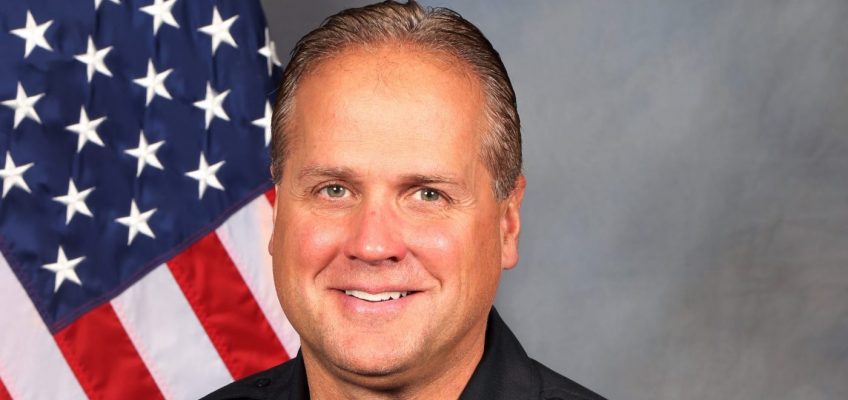The longest-serving president of the St. Paul firefighters’ union retired Thursday, the day after the city council recognized him.
They unanimously voted to declare Wednesday as Mike Smith Day. Smith joined the St. Paul Fire Department in 1998 after he was a firefighter for a decade at the Parkside Fire Department in Maplewood.
St. Paul Fire Capt. Mike Smith in a 2019 department photo. (Courtesy of the St. Paul Fire Department)
He was elected to the International Association of Fire Fighters Local 21 board in 2000 and as president in 2009. He was reelected six consecutive times, serving as president for 15 years — the longest in the 107-year history of Local 21, according to the city council proclamation.
Smith was a fire department captain, working on Rescue Squad 1 for the last 12 years at Station 4 on Payne Avenue off East Seventh Street. At Wednesday’s city council meeting, as he stood with fellow firefighters and department leaders, he said his time at the St. Paul Fire Department was “a dream job.”
Fire Chief Butch Inks noted that he and Smith worked together for progress.
“We didn’t always agree on everything, but we always … committed to staying at the table,” he said.
Beyond his union leadership, Inks said Smith is “one of the best firefighters this department’s ever seen.” At a fire, “he’s going to go in, he’s going to sacrifice himself” and make sure the fire is out, the chief said.
As Local 21 president, Smith oversaw negotiations for a 34 percent total increase in base firefighter wages, the proclamation said. The union expanded by more than 60 new members, the largest in Local 21 in 100 years. And Smith received the 2024 Local Leadership Award from the international union.
Smith was instrumental in pushing for state line-of-duty death benefits for the family of St. Paul Fire Capt. Mike Paidar, 53. His 2020 death from occupational cancer was the first recognized by the state as occurring in the line of duty.
Smith didn’t run for re-election in December, due to his upcoming retirement, and Fire Equipment Operator-Paramedic Kyle Thornberg was elected as the union’s new president.
Related Articles
As longtime St. Paul police officer battles stage 4 cancer, community rallies around him
St. Paul boy, 11, accidentally shoots himself while recording cellphone video
St. Paul firefighters find man dead after extinguishing garage fire in North End
Washington County man found dead in Hastings identified as missing person William ‘Ike’ Eickholt
Funeral service set for Woodbury teen killed in car accident




